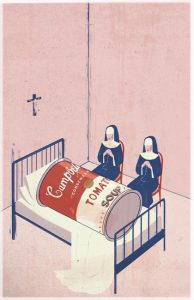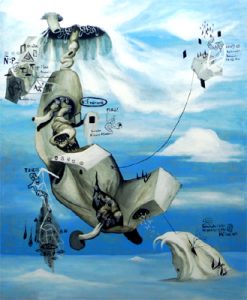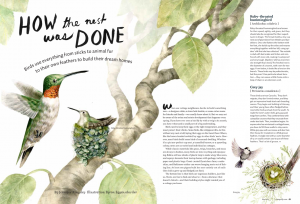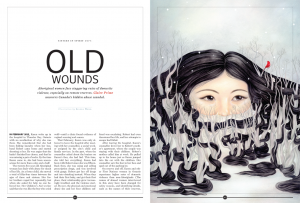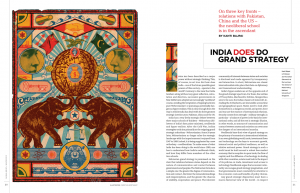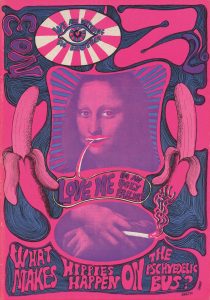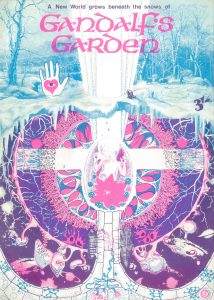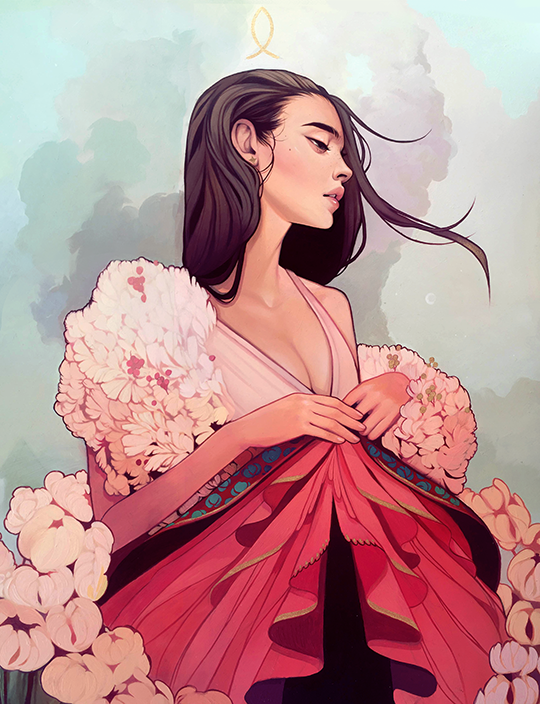Postmoderism was born as a reaction against moderism. While moderism focused on technique, form, and realism, post modern art focuses on the subjects and the message it’s trying to tell. It introduced a era of freedom within art. One of the post modern art movements that stands out to me is surrealism, for these reasons. In my own interests surrealism seems to be a reoccurring theme so that’s what I focused my research on.
The first image is an illustration by Emiliano Ponzi, titled “The Death of Postmodernism”. I think the title speaks for itself- the literal death of a Campbells Soup can, one of the most famous pieces of postmodern art. I think the imagery of the two nuns praying over it is effective, and the style in which the illustration was drawn is very similar to pop art, so the whole image is consistent and the soup can doesn’t feel out of place. I also like how Ponzi kept the rest of the colours very simple and pale, so the red and white of the can stands out in the illustration. What stands out to me from this illustration is that its self aware.
The second image also fits in with the pop art style. The illustration was used to advertise a new bar, and feature dreamlike scenarios together- reminiscent of the surrealism movement. Because of my interest in surrealism this image appeals to me, and I especially like the imagery and colour scheme; the colours contrast against each other really well and I like the whole hyperreality aspect.
The third artist is Ian Quirante, who also works in surrealism. He shows different forms and shapes in his paintings, and cartoon figures that reflect his psychological state. Each of his paintings tell a story; you need to look for all the little hidden details to fully understand what he’s trying to communicate. His work reminds me of Picasso and cubism because of the shapes and simplified forms. Like Haddad, his work also features a hypereality aspect, however Quirante’s style is a lot more realistic than the other two images, since he works in oil paint, and not screenprinting.
Ponzi. E, 2011, The Death Of Postmoderism, [image] Available at <https://www.emilianoponzi.com/portfolio/death-of-postmodernism/>
Haddad. M,2017, Unnamed, [image] Available at <https://www.itsnicethat.com/articles/michael-haddad-illustration-240817>
Quirante. I, 2009, Unnamed, [image] Available at <http://www.artesdelasfilipinas.com/archives/75/ian-quirante-a-postmodern-artist>

